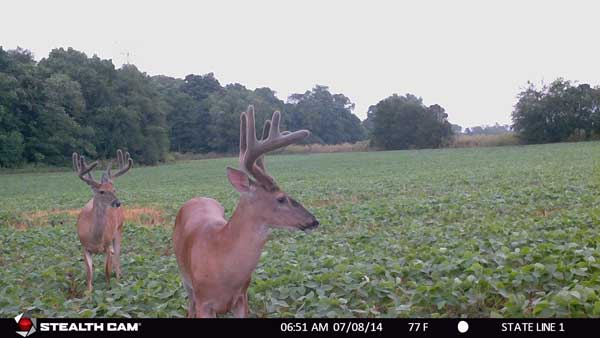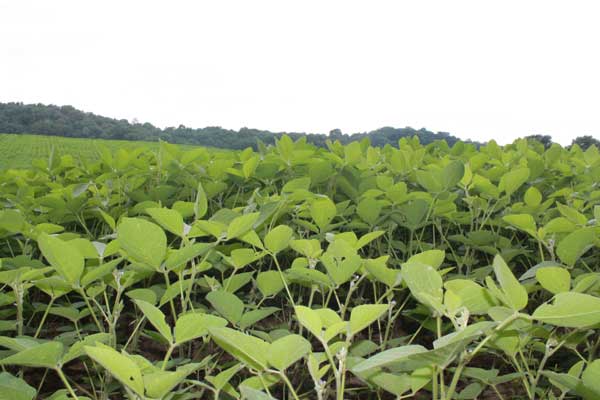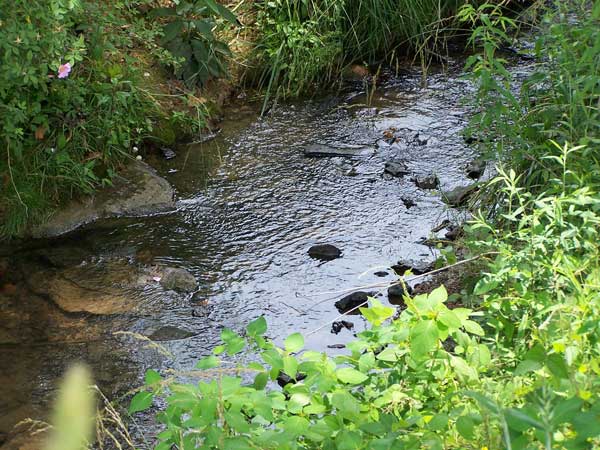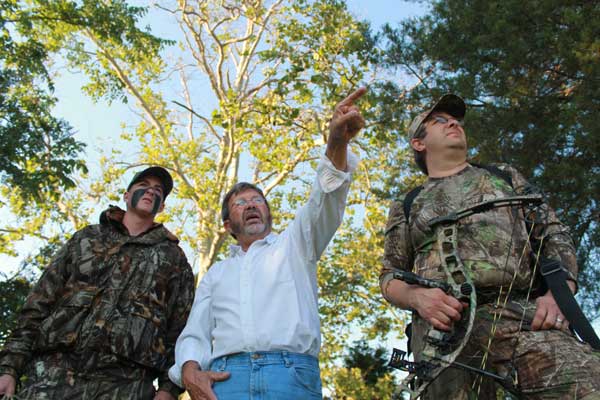LAST UPDATED: May 1st, 2015
The warm September wind hits you square in the face. It reminds you the summer heat isn’t over just yet. But it also reminds you that velvet-clad bucks are still running in their early season bachelor groups. And it’s time to capitalize on that fact.
It’s opening day and an afternoon in a treestand is just what the doctor ordered. It doesn’t take long for the first deer to enter the food plot. A doe grazes at the far end of it. The afternoon sun burns on and it soon dips below the horizon. Soon after, three shooter bucks step into view a mere twenty yards away. A smooth draw followed by a labored breath reveals the moment of truth. It’s moments like these we deer hunters live for.
So now for the big question. What is the best way to see this unfold in person? It takes three things: an understanding of the science behind bachelor groups, the skill to effectively scout them and the ability to pull a massive amount of information together to put yourself in front of these deer.
This is that comprehensive plan.
The Science of Bachelor Groups
The antler growing phase actually begins soon after shedding in February and March. Once the antlers shed and the pedicles heal new growth soon follows. Bucks begin growing soon after shedding and continue this process into early fall.
Testosterone levels start rising as the rut gets closer. Those same levels reach a point between late August and early September that causes a change in whitetails. Once testosterone reaches a certain point, antlers finish hardening, velvet starts drying up and all of that fuzzy stuff starts falling off.
It’s during this time that bucks are seemingly the most predictable. They’re likely still in their summer feeding patterns and following these patterns amidst other bucks of similar age classes. If your bow season is open, now is the time to target them and use predictability as your primary weapon.
During the dog days of summer these bucks, who may fight to the death just several weeks from now, will hang out virtually all day and night in what are known as bachelor groups. In many areas it’s not uncomon to see groups of 4-8 bucks during the summer. Photo taken with the new Stealth Cam G42NG trail camera.
There are several reasons for this predictability. The first is pressure. Bucks haven’t received hunting pressure for months so naturally they aren’t as leery of hunters.
The second reason is food. This is a very important time of year for deer. Food sources are abundant and they have to take advantage of them while they can. With winter still several months way bucks are stuffing their bellies full of lush green foliage before it turns brown and dries up. For this reason they tend to feed in the same areas day after day.
The third reason is camaraderie. Sometimes these groups are bucks of the same age class and sometimes they aren’t. The times when they aren’t tend to favor the hunter. If a mature buck is running with several young bucks, he may fall in sync with their habits which aren’t quite as honed as his. They will likely move much earlier during daylight which can put opportunity in the palm of your hands.
Summer Scouting
Scouting is the most important part of the early season equation; even more important than hunting. It’s a process that begins with taking what you know about deer and applying it to the goal of finding a buck you want to hunt. There are three universal components to deer movement: food, water and shelter.
This time of year the deer are mainly focused on one thing. That one thing is food. This is the single most influential factor in early-season movement. Find the food and find the deer. Food sources will vary depending on geographical location but some sure fire early season food sources to focus on include: soybeans, alfalfa, clover, peas, orchards, persimmons, and other soft mast and browse. The locations of these food sources will be the locations you find bucks. Look for trails on the fringes of food sources that lead to cover.
Soybean fields are a preferred food source during early season and a great spot to scout for bucks.
Another location to find high concentrations of deer is near a good water source. It can get very dry in early fall. Finding a heavily-used water source can be extremely productive. Look for tracks in moist areas. Tracks are a primary method to determine how much activity an area is receiving and if a big buck may be present.
Don’t overlook a good water source during your early season hunts; especially if it’s been a dry summer.
The last piece of the puzzle is cover. You have to know where they bed. Bucks will typically bed as close to their preferred food source as they can. Early in the year, this is usually fairly close. Sometimes as close as 40 or 50 yards off the food source. It all depends on how safe the deer feel. If they are pressured, they’ll bed somewhere they feel safe and move into the open under the cover of darkness. This is the reason it is crucial you tread lightly on your hunting property. Make as small of a footprint as you can when preparing for the season.
Now that you know where to scout it’s important to know how to scout these locations. There are two main methods to accomplish this. Live scouting from afar can be implemented or trail cameras can be posted to monitor activity. I think it’s best to use a combination of both. Post trail cameras near the high-traffic areas mentioned then get back 300 to 400 yards off the deer and watch their patterns.
The intel you gather from long range scouting paired with trail camera photos should give you the information you need to hang stands and brush in blinds. Remember when moving in on a group of bachelor bucks to leave as little scent behind as possible. Scent-free showers, spraying down with odor eliminator and rubber boots are a must.
Hunting Bachelor Groups
Finally it’s time for the hunt. The first step is to decide which stand location to hunt. This decision will be based primarily on wind direction, deer movement and access to your stand sites. Once you have used all of the gathered data and chosen a location, half the battle is won.
Once you’ve gathered all of your intel it’s time to put it to use and bag an early season buck.
The second step is to plan your entry and exit routes to that stand location. These should be low-impact routes that do not alert deer to your presence. These will be downwind of deer, out of sight from deer and quiet to walk on.
The third step is to take advantage of the weather. Take advantage of fronts, rain events and severe temperature swings. These three things generate more deer movement than anything else. Make sure you are in a stand when they take place.
Now all that is left is for you to make the shot count. Because you only get one chance at mature deer before they become the wiser. Be persistent. Be vigilant. Be deadly. Key in on bachelor groups this fall and use predictability to your advantage. Once bucks start breaking up, that predictability flies out the window.
In Conclusion
Hunting early-season bachelor groups can be a very fun time. Or it can be a very boring time. The thing about this period is you either have all the deer or none of them. Chances are, if you have the food, you have the deer. That means good times to come. And the good Lord willing, you’ll be right in the middle of a big bachelor group this season. Hunt hard, give God the glory and enjoy the ride. It begins in just a few short weeks.
After some early season scouting and several sightings of this buck feeding in an alfalfa field, Bowhunting.com staff member Dean Kreuger was able to move his treestand and get a shot. Click here to watch the entire hunt as seen on Bowhunt or Die.

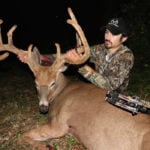 By
By 